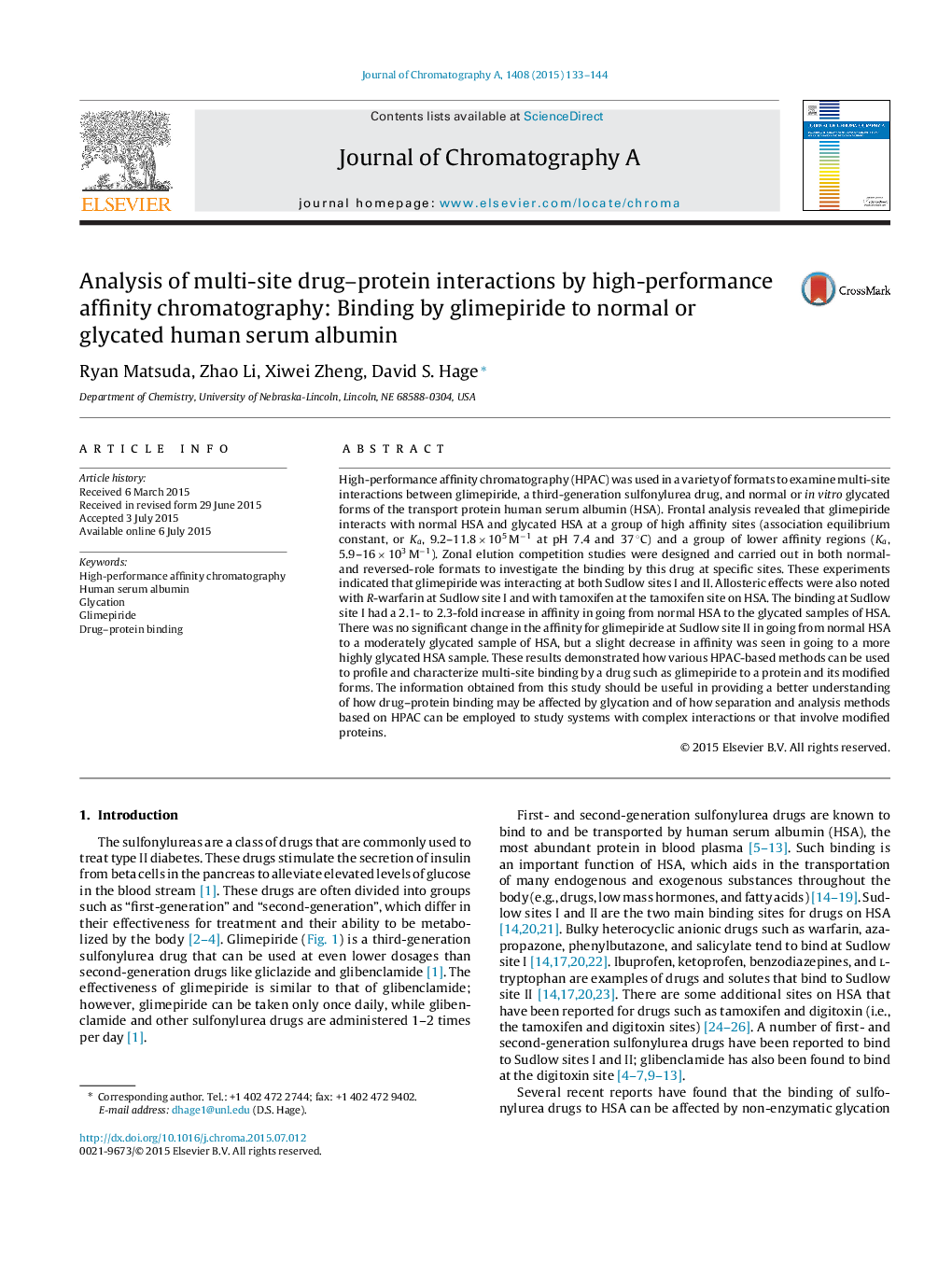| Article ID | Journal | Published Year | Pages | File Type |
|---|---|---|---|---|
| 7611625 | Journal of Chromatography A | 2015 | 12 Pages |
Abstract
High-performance affinity chromatography (HPAC) was used in a variety of formats to examine multi-site interactions between glimepiride, a third-generation sulfonylurea drug, and normal or in vitro glycated forms of the transport protein human serum albumin (HSA). Frontal analysis revealed that glimepiride interacts with normal HSA and glycated HSA at a group of high affinity sites (association equilibrium constant, or Ka, 9.2-11.8 Ã 105 Mâ1 at pH 7.4 and 37 °C) and a group of lower affinity regions (Ka, 5.9-16 Ã 103 Mâ1). Zonal elution competition studies were designed and carried out in both normal- and reversed-role formats to investigate the binding by this drug at specific sites. These experiments indicated that glimepiride was interacting at both Sudlow sites I and II. Allosteric effects were also noted with R-warfarin at Sudlow site I and with tamoxifen at the tamoxifen site on HSA. The binding at Sudlow site I had a 2.1- to 2.3-fold increase in affinity in going from normal HSA to the glycated samples of HSA. There was no significant change in the affinity for glimepiride at Sudlow site II in going from normal HSA to a moderately glycated sample of HSA, but a slight decrease in affinity was seen in going to a more highly glycated HSA sample. These results demonstrated how various HPAC-based methods can be used to profile and characterize multi-site binding by a drug such as glimepiride to a protein and its modified forms. The information obtained from this study should be useful in providing a better understanding of how drug-protein binding may be affected by glycation and of how separation and analysis methods based on HPAC can be employed to study systems with complex interactions or that involve modified proteins.
Keywords
Related Topics
Physical Sciences and Engineering
Chemistry
Analytical Chemistry
Authors
Ryan Matsuda, Zhao Li, Xiwei Zheng, David S. Hage,
